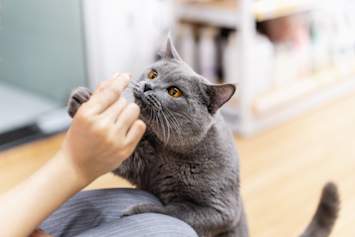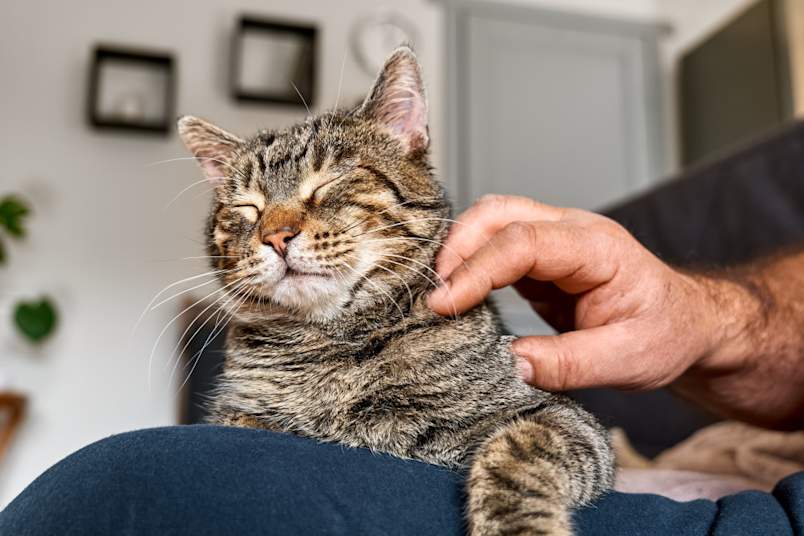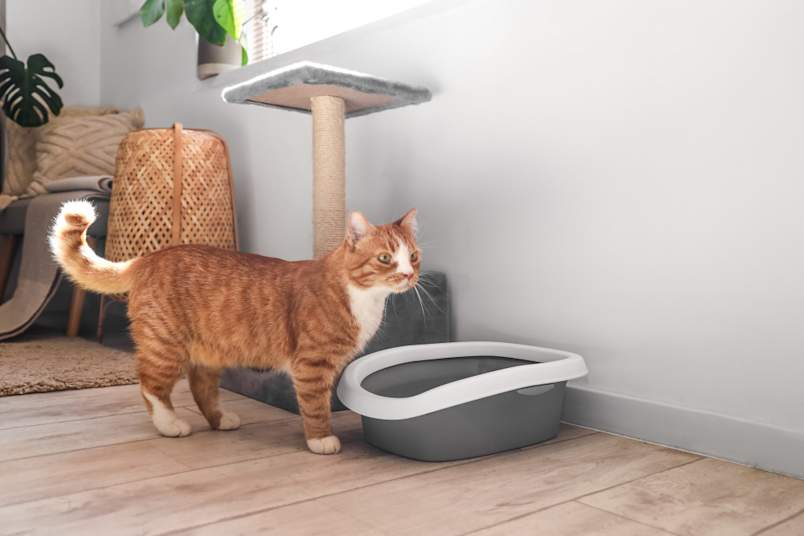
Cats are furry little companions that can bring us years of joy and laughter, but they also come with a price tag. Cat ownership isn't cheap, but it's worth it!
The best way to ensure you and your cat can have a lifetime of fun memories together is planning for great healthcare. Known for living well into their teens and sometimes early twenties, cats require many years of care. By understanding the lifetime cost of cat ownership and preparing for both expected and unexpected expenses, you can avoid stressful and sometimes painful decisions when the time comes for veterinary care.
Factors that affect the cost of cat ownership include where you get the cat, how much healthcare they need throughout their lifetime, and general health as they continue to age. Preparing for every scenario is impossible, but knowing how much cats and kittens cost per year and over their lifespan can give you an opportunity to plan ahead.
While the cost of cat ownership can be significant, it is important to remember that cats can bring us many years of joy and companionship. They are loving, playful creatures that can enrich our lives in so many ways.
So How Much is a Cat Initially?
An estimated 25 – 35% of American households have at least one cat. While sometimes acquired from a shelter or breeder, cats are often also brought into a home through unplanned circumstances such as those found as strays or given as a gift. The largest percentage of housecats are mixed breeds (roughly 75 – 84%), although purebred cats are not uncommon and may carry their own unique cost considerations.
Adopting a Cat
Cat prices at an animal shelter average between $50 to $250, however these cats often come fully vaccinated, treated for parasites, and spayed or neutered. They may even be microchipped, which means you save on cat microchip costs too. There are significant up-front savings on healthcare when cats are adopted from a shelter.
As time goes on, shelter-adopted cats still need annual check-ups with a veterinarian that include routine vaccine boosters. Pet wellness plans can help pet owners budget for these routine expenses, reducing the financial anxiety about annual healthcare, which can cost upwards of $300.
Obtaining and maintaining pet insurance for cats early in life might mean that even as they age, older cats could be eligible for insurance coverage for sudden or chronic conditions. It is important to start and continue insurance coverage as early as possible, to avoid ineligibility for coverage due to preexisting conditions.
Purebred Kitten Cost
Depending on the breed and source, purchasing a purebred kitten can cost anywhere from $500 to $10,000 depending on the breed and breeder. The disadvantage to these already expensive cats is that they often only come to their new owners with a single set of vaccines and parasite treatments.
Once you bring your sleek new furry friend home, you still may face initial medical expenses including a series of vaccines and boosters, which can cost $200 or more per visit (there are usually 3 – 4 visits). Eventually you’ll also need to budget for the cost of spaying or neutering, costing between $100 and $800 depending on the level of care your clinic provides. Because they are at greater risk for hereditary or breed-related diseases than their mixed breed counterparts, planning for lifelong care is important.
This means the initial healthcare costs of purchasing a purebred kitten fall between $700 - $12,000 (heavily dependent on how expensive the kitten was to begin with).
Annual veterinary visits cost the same for shelter-adopted or purchased purebred cats, but if you choose a breed known for certain health conditions, be sure to research how much it costs per year to manage the condition.
The Cost of First Year Cat Supplies
Every kitten or cat needs to have their basic needs met. An age and lifestyle appropriate food is necessary, and veterinarians recommend well-balanced, commercially prepared diets to ensure your cat’s nutritional needs are fulfilled.
Litter boxes are essential too, and veterinarians recommend at least 1 litter box per cat plus one – so for a 2 cat household, you’d need 3 litter boxes, and so on. The type of litter used is up to you and your cat!
A safe and enriching environment is the final puzzle piece – cats need appropriate stimulation, and outlets for normal behaviors such as cat toys, scratch boards and posts, elevated spaces for perching, and spaces to hide for refuge.
The initial costs of cat care products like food, litter boxes, and environmental enrichment can easily cost $250 or more. When added to the cost of adoption or purchase, plus healthcare, this number might seem high, however providing for a cat’s needs early on sets up cats and kittens for success in their new home.

Ongoing Annual Cat Expenses
The industry of companion animal care is worth hundreds of billions of dollars, and it’s no wonder. When we bring a pet into our home, they become part of the family, not just creatures occupying space in our dwellings.
Cat food costs anywhere from $100 a year to $2000 (for owners who feed outside of conventional means), and cat litter averages $150 per year.
Veterinary care every year often approaches or exceeds $300 for wellness care alone. As cats age, their veterinarian may recommend expanding visits to include laboratory testing and other diagnostics, instead of just an exam and vaccinations.
Adding up the numbers, you can expect to spend $650 or more each year on your cat, provided that no unexpected healthcare needs arise.
In addition to routine wellness care, cat dental healthcare should be part of your cat’s routine checkups. It’s estimated that 50 – 90% of cats over the age of 4 have some form of dental disease. Even if your feline friend is amenable to tooth-brushing, be sure to consider what a cat dental cleaning cost will be. Dental disease can cause other healthcare problems in cats, so early intervention can reduce their risk for more advanced secondary diseases.
Pet Wellness Plans
The cost of routine and non-routine healthcare can be greatly reduced when cat owners are prepared with a pet insurance plan, and even an optional wellness plan. With a pet wellness plan, you may be eligible for reimbursement for the cost to neuter a cat or the cost to spay a cat, as well as routine vaccinations and visits. These wellness plans are great budgeting tools for keeping your cat (and your wallet!) healthy.
Additional Expenses for Your Feline
Most cats are fastidious groomers and don’t typically need assistance, but specialty purebred cats, or mixed breed cats with longer coats may need to see a groomer from time to time. In the meantime, occasional brushing and nail trimming are all that is needed.
Even indoor cats--though especially cats who go outdoors--are at risk for picking up external parasites that affect all animals in the household, including humans, so routine flea and tick prevention are recommended. Most products require monthly re-application, though there are prescription-only products that conveniently last for months at a time.
Budgeting and Financial Planning for a Cat
Some cat care costs are predictable, like the monthly expense of cat food and cat litter. After a few short weeks of cat ownership, purchasing habits begin to form, making costs of food and litter fit into your budget smoothly.
While the annual cost of wellness veterinary care may also be predictable, planning intentionally for this means you’re less likely to be shocked at the invoice total each year. While price increases at vet offices have to keep pace with inflation and rising costs of care, you can expect visits to be similarly priced from one year to the next, so keep past invoices or ask the hospital’s customer service professionals to remind you what the visit cost was in previous years. You can ask for an estimate too – most offices can briefly review your pet’s medical history and give you an idea of how much the visit might cost.

Budget for Emergency Vet Care
While routine veterinary care is typically predictable and affordable, unexpected accidents or illnesses can lead to significant financial costs. Our cats are our beloved companions, and we want to give them the best possible care. That's where kitten insurance comes in.
Finding affordable pet insurance can help to cover the cost of unexpected vet bills for accidents and illnesses. This can include things like X-rays, blood work, surgery, and medications. Pet insurance can help to give you peace of mind knowing that your cat will be able to get the care they need, regardless of the cost.
It is impossible to predict when and how an emergency might happen, but knowing it’s a possibility gives you a chance to plan ahead. Depending on the type of visit, you may face expenses as low as $500 or as high as thousands of dollars. If you regularly take your cat to a veterinarian for wellness healthcare, they may be willing and able to schedule you quickly when your cat is sick, which may save some expense. However, if your cat’s veterinarian is fully booked, or the emergency is significant and beyond their capacity to treat, you’ll likely be referred to an emergency center. Emergency visits alone can cost over $200, and any tests and treatment will be extra.
If you're thinking about getting pet insurance for your cat, I encourage you to compare different plans and choose one that's right for you and your furry friend. Pet insurance is a great way to show your cat how much you love them and to protect you from financial hardship in the event of an unexpected accident or illness.
Financial Preparation for Cat Ownership
While it is not possible to anticipate every situation, it’s possible to be financially prepared for cat ownership when you plan ahead. The cost of a cat’s basic needs often remains stable throughout the year, allowing you to budget for monthly re-stocking of basic supplies.
Variable costs like veterinary care, or care for accidents and illnesses might not be the most predictable. This is especially true when bringing a new cat home, or for older cats later in life as they develop health conditions. But when owners leverage cost saving tools like wellness plans and pet insurance, they not only reduce their own financial burden, but they can ensure a lifetime of love and care for their feline companions.